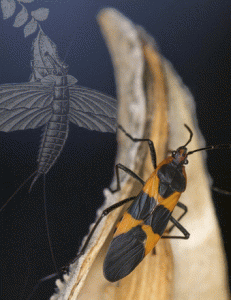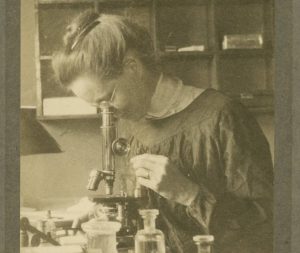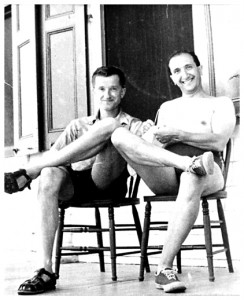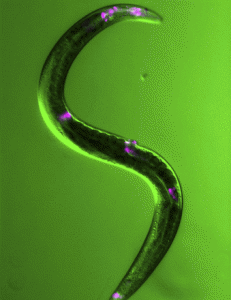Enter your address to receive notifications about new posts to your email.
Science & Publishing
-
Science & Publishing
New in G3: heat shocked worms and CRISPRed chickens
Check out the April issue of G3! Meeting Report Evolution of Plant Phenotypes, from Genomes to Traits Josep M. Casacuberta, Scott Jackson, Olivier Panaud, Michael Purugganan, and Jonathan Wendel G3 April 2016 6:775-778; Early Online February 11, 2016 doi:10.1534/g3.115.025502 Full Text | Full Text (PDF) Investigations Utilizing Gene Tree Variation to Identify Candidate Effector Genes…
-
Science & Publishing
Wine yeast genomes lack diversity
Sequencing the genomes of hundreds of strains of the wine yeast S. cerevisiae has revealed little genetic diversity and high levels of inbreeding. In many cases, yeast strains sold by different companies were almost genetically identical. The results, published in the April issue of G3: Genes|Genomes|Genetics, suggest that winemakers attempting to develop improved wine yeasts…
-
Science & Publishing
April GENETICS highlights
Check out the the April issue of GENETICS by looking at the highlights or the full table of contents! This Month’s Centennial Articles Motoo Kimura and James Crow on the infinitely many alleles model pp. 1243–1245 Warren J. Ewens Warren J. Ewens introduces Kimura and Crow’s 1964 GENETICS Classic The number of alleles that can be maintained in…
-
Science & Publishing
Nettie Stevens: Sex chromosomes and sexism
At the time of her death in 1912, Nettie Maria Stevens was a biologist of enough repute to be eulogized in the journal Science by future Nobelist Thomas Hunt Morgan and for her passing to be noted in The New York Times. In 1910 she had been listed among 1,000 leading American “men of science.”…
-
Science & Publishing
Eight reasons you should get—and use—an ORCID iD
You may have seen that recently several publishers signed an open letter committing to requiring ORCID iDs for at least the corresponding authors of accepted papers. Perhaps you’ve submitted a grant application to one of the funders now requiring ORCID iDs for grantees. Or maybe you’ve been asked—or required—to use your ORCID iD in one…
-
Science & Publishing
Luria & Delbrück: Jackpots and epiphanies
In the early 1940s, many biologists doubted bacteria had genes. After all, they seemed to play by their own genetic rules: they appeared to lack chromosomes, meiosis, mitosis, sex, and all the other trappings of Mendelian inheritance. They even seemed to show a kind of Lamarckian inheritance, in which an individual could pass on traits acquired…
-
Science & Publishing
Evolving butterflies and genome assemblies
The dizzying array of wing patterns in Heliconius butterflies has served as a model for evolution and adaptation in the wild for more than a century. The genus is most famous for the way different species within a geographic region tend to converge on similar wing markings—known as biological mimicry. In the latest issue of…
-
Science & Publishing
March GENETICS highlights
Check out the the March issue of GENETICS by looking at the highlights or the full table of contents! This Month’s Centennial Articles Richard Hudson and Norman Kaplan on the coalescent process, pp. 865–866 Nicholas H. Barton Senior Editor Nicholas H. Barton introduces Hudson and Kaplan’s 1988 Classic, which extended the coalescent process to include selection, applying it…
-
Science & Publishing
Inducing lifesaving sleep in worms
Sometimes, a nematode worm just needs to take a nap. In fact, its life may depend on it. New research has identified a protein that promotes a sleep-like state in the nematode Caenorhabditis elegans. Without the snooze-inducing molecule, worms are more likely to die when confronted with stressful conditions, report researchers in the March 7, 2016…
-
Science & Publishing
New in G3: butterfly evolution, barley genetic drift, and stickleback ornamentation
Check out the March issue of G3! Investigations Partial Dominance, Overdominance, Epistasis and QTL by Environment Interactions Contribute to Heterosis in Two Upland Cotton Hybrids Lianguang Shang, Yumei Wang, Shihu Cai, Xiaocui Wang, Yuhua Li, Abdugheni Abduweli, and Jinping Hua G3 March 2016 6:499-507; Early Online December 29, 2015, doi:10.1534/g3.115.025809 Abstract | Full Text |…
-
Science & Publishing
How to write titles that tempt
You slave over writing your paper, trying to make sure that the introduction sets up a compelling story, that the results provide clear and convincing evidence for your conclusions, and that your discussion of what it all means makes sense. You and your co-authors edit relentlessly, passing the manuscript back and forth, improving it with…










